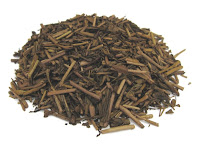
December 10, 2009, Japanese Mandarin and Pear Expo was held for the first time in the U.S. This expo was supported by Japan's Agricultural Ministry and intended to increase the volume of trade of Japanese Mandarin "Aoshima" and Japanese Tottori 20th Century Pear.
Did you know there has been Japanese Mandarin "Aoshima" imported to the U.S. for centuries? Furthermore, it is surprising for me that only Aoshima Mandarin from Shizuoka prefecture, where our teas come from, is allowed to be imported to the U.S. As I blogged before, Shizuoka is famous as No.1 tea producing prefecture, and also famous as a quality Aoshima Mandarin producing region.
 At the expo, Chef Dean Shinagawa and his team demonstrated a variety of ways to cook Aoshima Mandarin and Tottori 20th Century Pear. When I was in Japan, I ate a lot of these mandarins and pears, but what Chef Dean made was completely different from what I had eaten before and super delicious! Right now, many of Aoshima Mandarin imported to the U.S. go to Alaska, very few to the mainland. I hope Aoshima Mandarin gets more popular in the mainland, and many local grocery stores start carrying it.
At the expo, Chef Dean Shinagawa and his team demonstrated a variety of ways to cook Aoshima Mandarin and Tottori 20th Century Pear. When I was in Japan, I ate a lot of these mandarins and pears, but what Chef Dean made was completely different from what I had eaten before and super delicious! Right now, many of Aoshima Mandarin imported to the U.S. go to Alaska, very few to the mainland. I hope Aoshima Mandarin gets more popular in the mainland, and many local grocery stores start carrying it.
 Because our teas and Aoshima Mandarin come from the same Shizuoka prefecture, I provided green tea samples at the expo. Eating a mandarin orange with drinking green tea is authentic Japanese way to enjoy the winter time. It was my pleasure that many people enjoyed the Japanese tradition at the expo.
Because our teas and Aoshima Mandarin come from the same Shizuoka prefecture, I provided green tea samples at the expo. Eating a mandarin orange with drinking green tea is authentic Japanese way to enjoy the winter time. It was my pleasure that many people enjoyed the Japanese tradition at the expo.
At the end, I'd like to thank Market to Japan to organize this expo and provide us with this great opportunity.
Did you know there has been Japanese Mandarin "Aoshima" imported to the U.S. for centuries? Furthermore, it is surprising for me that only Aoshima Mandarin from Shizuoka prefecture, where our teas come from, is allowed to be imported to the U.S. As I blogged before, Shizuoka is famous as No.1 tea producing prefecture, and also famous as a quality Aoshima Mandarin producing region.
At the end, I'd like to thank Market to Japan to organize this expo and provide us with this great opportunity.


